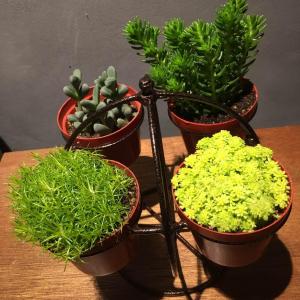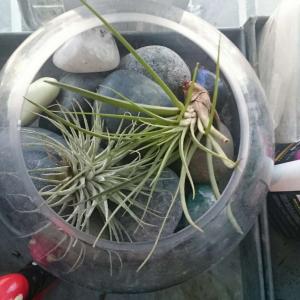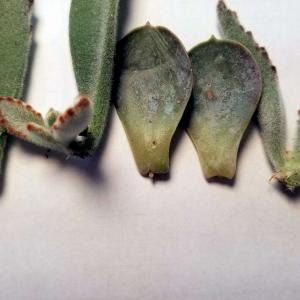文章
Abigal
2017年05月15日


Greenhouses can extend your #growing season, allow you to propagate plants from your yard, and the yard of #fellow gardeners, and let you grow tender or delicate plants you might not otherwise be able to grow. I’ve seen lettuce and spinach grow in a greenhouse when there was a foot of snow on the ground. An old gardening friend of mine would use her #greenhouse to pot up all her volunteer seedlings from her yard, grow them in four inch pots in the greenhouse, then have a plant sale to raise money for her charity. Any way you look at it, if you’re a serious gardener, you would love to get your hands on a greenhouse. So how do we solve problems at TGG? We #DIY it! We found you some great DIY greenhouse projects and plans that range from a temporary row solution, all the way to a full size backyard greenhouse! Before you pick out a project, read over our “getting started” tips to help you choose, site and start your DIY greenhouse. Our feature project, above, is a mini window greenhouse by Crafts Ala Mode.
Getting Started with Your Greenhouse
Position your greenhouse running lengthwise east to west. This will give it the longest stretch of daylight each day.
Make sure your greenhouse will get at least 6 hours of sun in the winter.
Remember, if you plan on having electricity in your greenhouse, site it close enough to your source.
Try to position it away from kids play areas.
Make sure your greenhouse has a working thermometer. You will need to pay attention to temperature unless your system has automatic venting. In the winter, the minimum inside temp should remain between 45-60 degrees for active growing. A sunny winter day can quickly heat up the interior of a greenhouse, even if its freezing outside. Be sure to open vents and allow cool air to enter when the temps rise too much.
‘Design Dreams by Anne’ created this DIY baby greenhouse from old storm windows. This may be one of my favorite projects! It may not be air tight for all you who are looking for that, but I think it would do a very charming job for the most of us. Did I mention it’s charming?

Want to save the earth? Ana White has free plans on how to make a plastic bottle greenhouse! What a great idea and re-use of materials!

Here’s another soda bottle greenhouse for inspiration, photo by John Rutherford.

Need a quick and inexpensive idea for protecting plants already in the ground? 2-Liter soda bottles and some ingenuity.

Need a portable seed starting greenhouse/ cold-frame? Find out how to make this greenhouse at Instructables from Brian Perry.

Ok, let’s get serious. Ana White made her own DIY barn style greenhouse from her plans, and it is incredible! All her DIY plans are amazing, but with all the step by step photos, I really feel like I could make this!

Find our how to build a $50 greenhouse! Yes, this hoop house was built by Door Garden, and was profiled in Birds and Blooms magazine. Lot’s of good information here, and step by step photos.
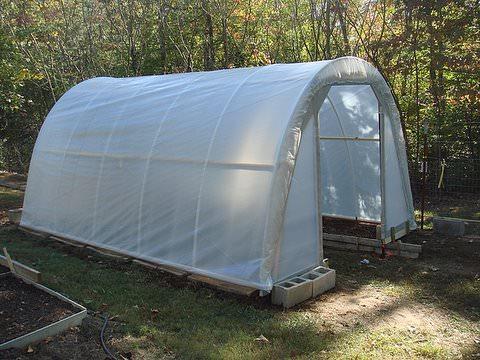
How to make a greenhouse from a pallet, by Anthony Win on Instructables.

Find an easy tutorial for this homemade greenhouse at ThinMac. It looks like it would fit well in a small yard, too!

No, this isn’t 1982. This geodome greenhouse is perfect for areas with high winds and heavy snows. Northern Homestead made this easy for the rest of us, because they did all the hard work. They even included a link to an online calculator to help figure out the mathematics of the dome!

Finally, Fabulously Frugal made this greenhouse for less than $100! Great instructions…actually, theirs came out to $67!
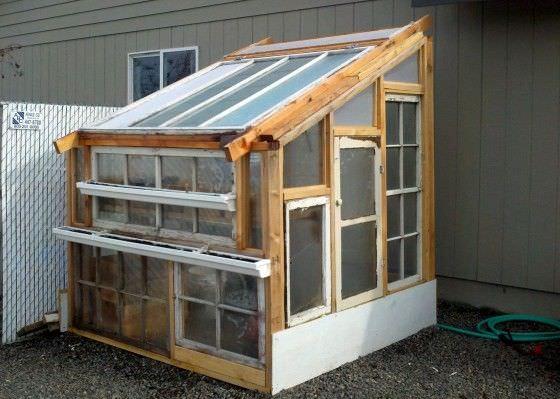
2
1
成长记
Cleaux
2017年05月12日

Sunday may 7th :(. I moved my plants into a storage room because it has more light. Naturally the window falls on them the next morning....
Also two little ones blew over twice in one week when the window was cracker. I think I have a anti-plant ghost.



Also two little ones blew over twice in one week when the window was cracker. I think I have a anti-plant ghost.



3
0
求助
Sammi Chong
2017年05月08日

Recently All My plan are gone。 What happen to the plants ?


2
0
常多多:@Sammi Chong sounds complicated. Why not just buy mixed soil directly.
Sammi Chong:Im Very new with succulent ...Still dont know How to mix the soil with others .... How u All mix the soil with Others ?pls advice
Chelsea:mine too.... it happens, let's wish them happy in heaven 🎈
常多多:too much water in hot summer is dangerous for them。
成长记
Cleaux
2017年05月06日

I new added a "Echveria ? Saw her in Cvs - no sun, had brown spots all over. One of my first plants. Less brown spots and much greener." in my "garden"


2
0
文章
Abigal
2017年05月02日

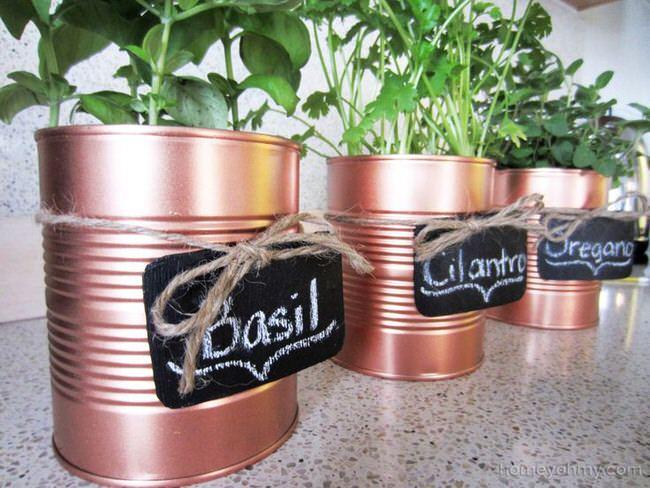
I love metal projects, and copper is a perfect medium to reflect the natural and changing state of a garden. Beautiful in all it’s forms, it is representative of how plants and gardens change through their seasons, and offer different interest at different stages. Also, it’s just really fun to work with! Relatively inexpensive, copper starts it’s life shiny and bright, and patinas over time to a lovely verdigris. Although I love that look, if you want your copper project to stay bright, simply seal it with an exterior grade clear sealer. So on to these great DIY copper garden projects that any of you can do in an afternoon! Our featured project, above, is a tutorial on how to make DIY copper tin can planters (and chalkboard tags!) from Homey Oh My! Easy and quick project with impact!
‘Tool Using Animal’ (via Instructables) made this incredible copper rain chain with copper tubing and solder. This is my fav rain chain project, and the tutorial is very complete, but I do notice he used a blow torch to solder the rings. I personally don’t own a blow torch, but it honestly gives the cleanest look, so if you have to borrow one, do! If you can’t or aren’t comfortable using one, look forward to the next project…

As promised, a copper rain chain made without a blow torch! Ex-Scapes made this DIY copper rain chain using copper wire instead of solder…
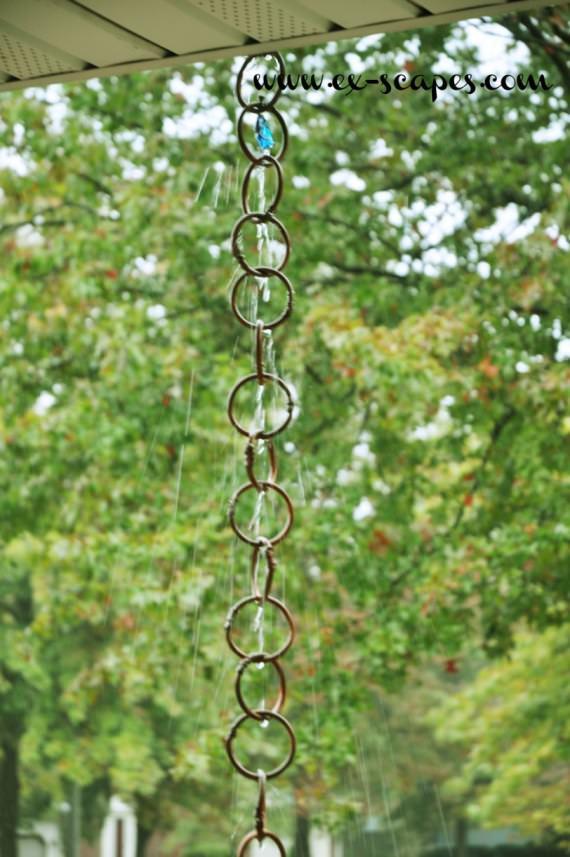
Simple, simple, simple! This copper mailbox by Sand and Sisal is a half hour project…really! What great curb appeal!
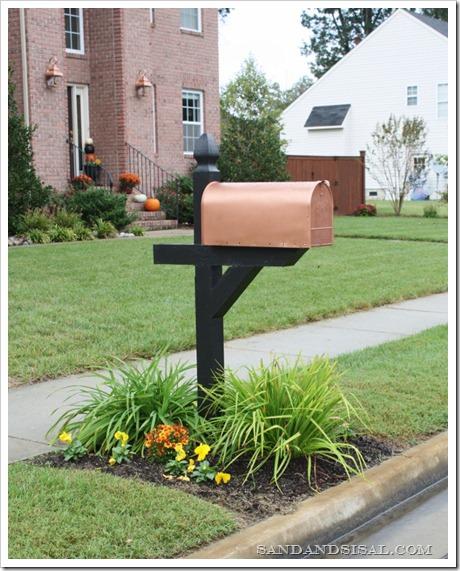
Ashley of Sugar and Cloth, and contributor at Poppytalk, created these DIY mini copper planters from copper fitting caps and a bottle of ketchup! Or catsup…whatever… Curious? Easy and cool! How about these with a moss garden?
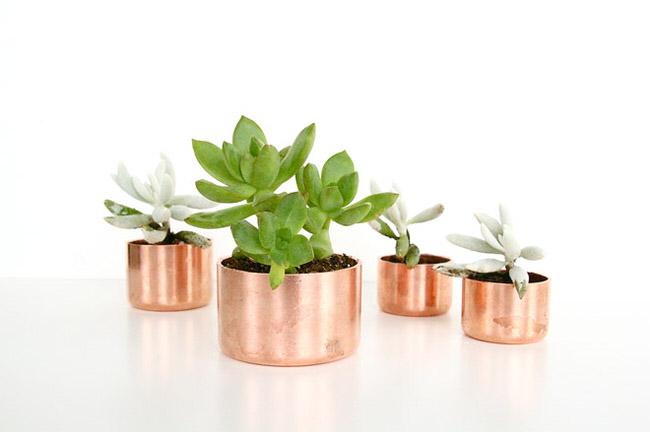
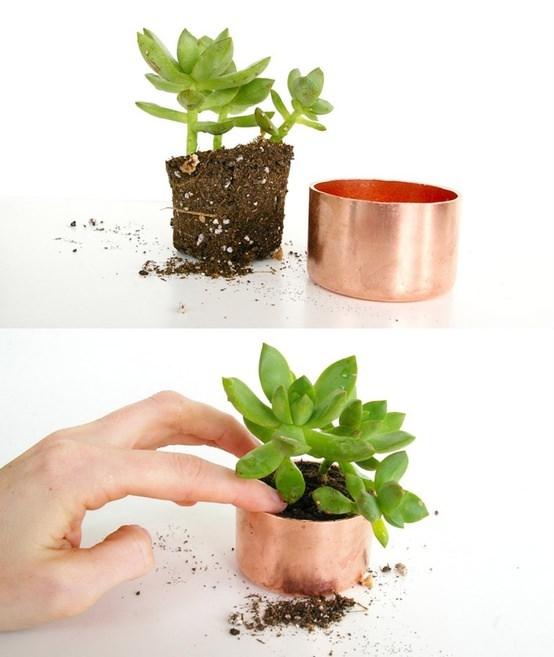
From the book, Trellises, Planters & Raised Beds from Cool Springs Press, this DIY copper coil trellis is easy and really amazing as art in the garden.

Another type of decorative copper trellis project, from Lowes. Complete directions, under $100.
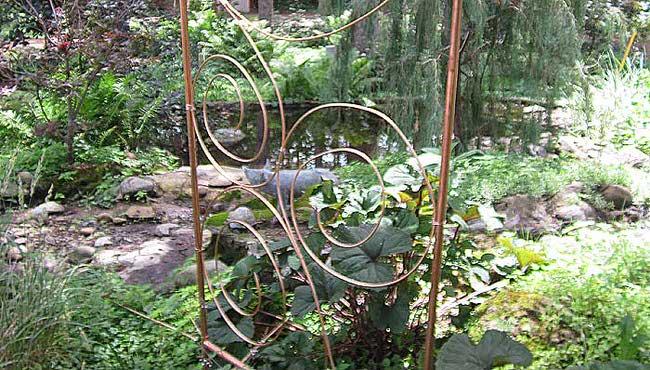
Another great project from Sand and Sisal, this DIY copper mobile is such an awesome idea, and so incredibly easy… make sure you choose the size of copper tubing that bends easily. (But not too easily!)
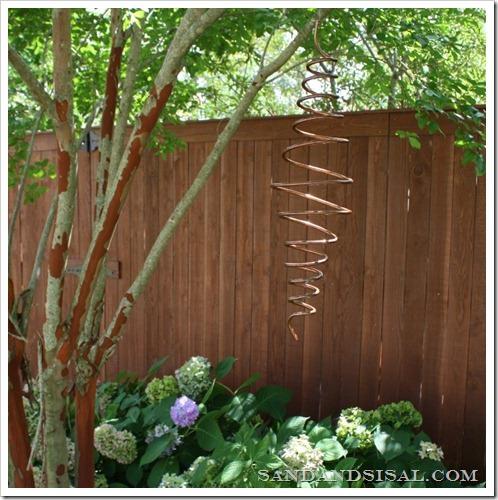
From Family Handyman, make this copper trellis for your garden from copper pipe for all your climbing plants… Can you imagine your roses, or even your cucumbers growing on this?
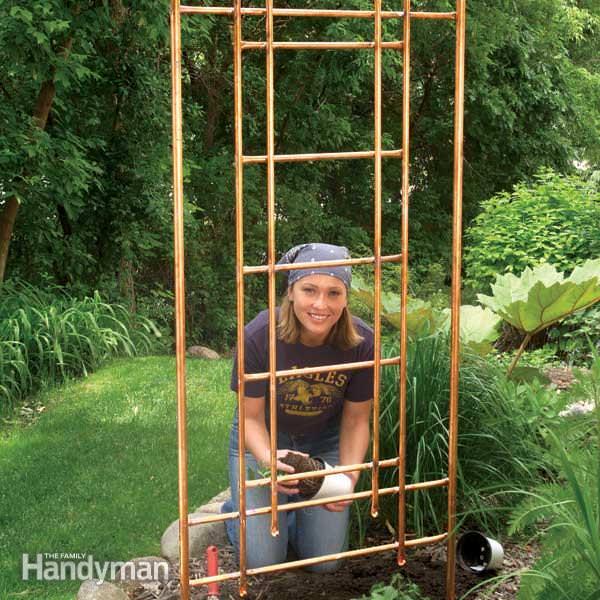
This copper tomato spiral from ‘Suzy Homefaker’ is both functional and decorative. See how she made it.
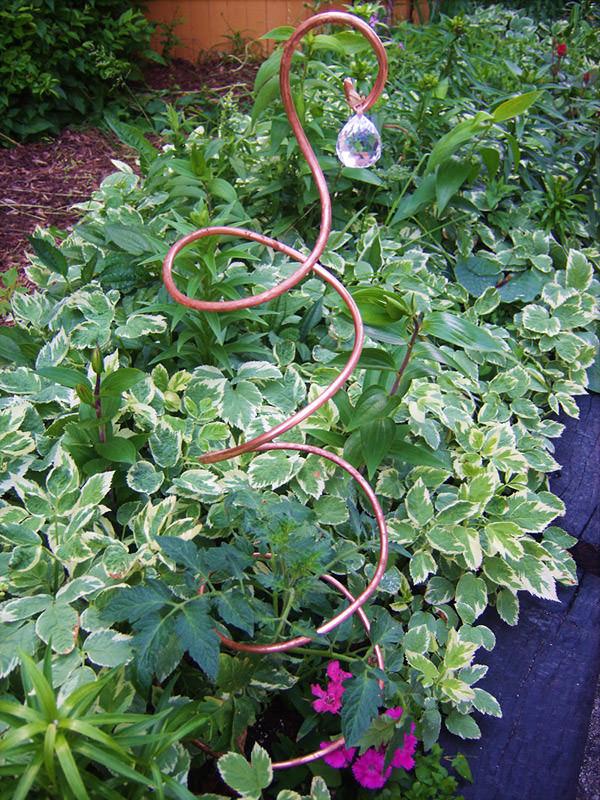
Finally, make copper wind chimes with the complete instructions by Chica and Jo. They use copper pipe, and remember your hardware store may be able to cut it for you!
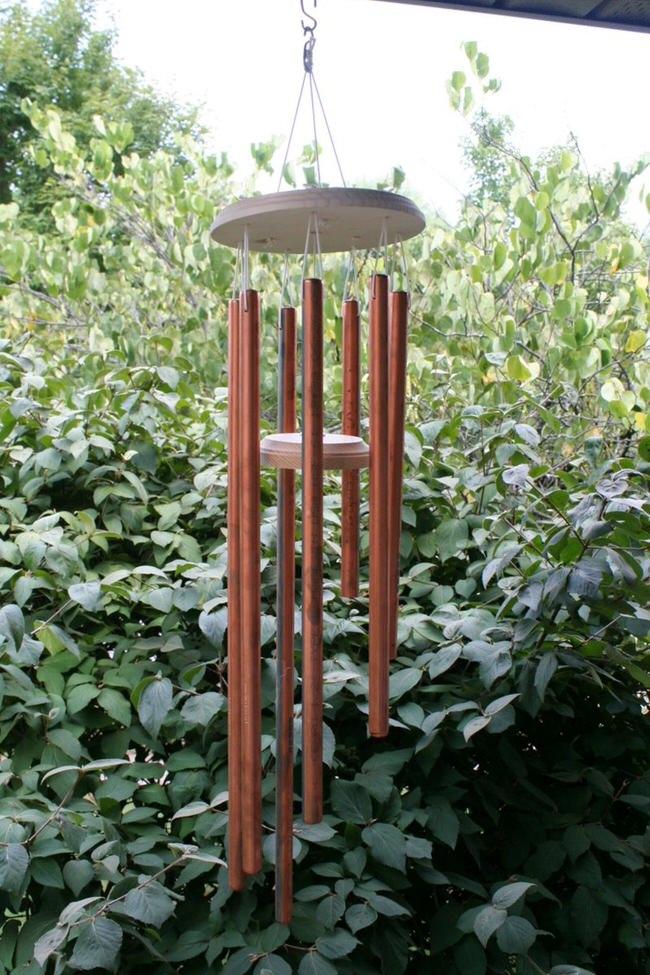
0
0
Beyond:I want to steal your copper model. It's cool.
成长记
Asloro
2017年04月23日

My apple plants are growing more. I'll put them in bigger pots very soon.
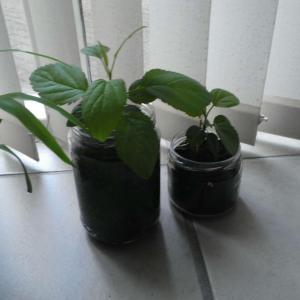

0
0
求助
Gaia za
2017年03月23日

npn so.il nome della pianta grassa con fiori arancioni.. i.need the nam of this little plants




0
0
cactusera:Ciao, è una Opuntia monacantha, credo, pero è che ci sono molti ibridi...
求助
Danielle Flavell
2017年03月18日

Could someone please let me know the names of these plants ? (especially the one in the pink pot). Thanks
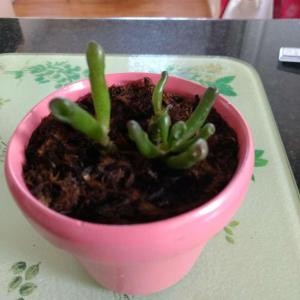
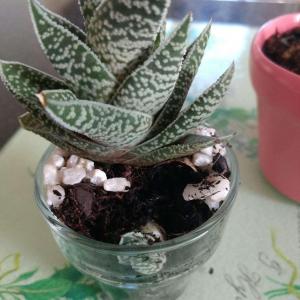


3
0
文章
安小宝
2017年03月16日


Japanese Maples are easily one of the most elegant and stunning specimen plants you can add to your garden. There are varieties that can be grown in containers, and few of them ever reach over 25 feet tall, making them adaptable to any space. The fall colors on Japanese Maples is stunning, and because of their smaller size, easy to appreciate in a small garden than a larger tree or shrub. Many varieties even look amazing all winter long with attractive bark and branch formation. They leaf out early with fresh green leaves, some of which change to reds or oranges as the season progresses. They are available in both red and green varieties, and some varieties have reached collector status.
Japanese Maples also have a reputation for being difficult to grow, but while they have needs that need to be attended to for best growth and color, they are a tough and adaptable plant.
Here are the steps on how to grow Japanese Maples, and our top fav varieties!
Sun vs. Shade
Japanese Maples are shade lovers, but they do need some sun in order to get to their best color. It’s best to provide morning sun and afternoon shade, or dappled shade at most. The farther south you are, the more afternoon shade should be provided. Below is an example of leaf scorch that some maples are prone to with too much afternoon sun.
Soil
They are eager feeders, especially when young, so lots of compost or organic matter should be worked into the planting hole. One note: These plants do not do well with salt in the soil. They can handle a wider variety of soil issues, but that is deadly to them.
Water
Evenly moist, not soggy and not dry when young. Believe it or not, at maturity Japanese Maples can be somewhat drought resistant.
Wind
Obviously you can’t protect any outdoor plant from all wind, but if you can choose a more protected spot, your maple will appreciate it. Winds can dry out and brown the leaves if they are constant.
Cold/Heat
Most Japanese Maples are hardy down to zone 5, but they dislike overly hot environments. However, I grow my Coral Bark Maple in an inland northwest desert, in full afternoon sun… I just keep it well watered every day in well drained soil… However, towards the end of summer I do get some brown curling on the leaves.
Special Tips
Reduce your watering in the fall for the best color. Japanese Maples grow fairly slowly, so if after a season or two you find the spot you chose isn’t working, you can dig it up and move it, they are pretty tough. Just dig a nice sized root ball and transplant it in the fall. Water it well… even if you see some stress related leaf drop, chances are it will be just fine come spring.
Favorite Varieties
Green
Coral Bark – This variety has lovely red bark that shows well in the winter months. Leaves are green with a sight reddish edge, then turn golden in the fall. To 20 feet.

Gold
The Golden Full Moon Maple has gorgeous gold leaves, that turn more red from the tips down in the fall. To 20 feet.

Red
Dissectum Atropurpureum – This is the common red variety that you see with fine foliage and a dwarf form.

Best for Southern or Warmer Climates
Beni schichihenge – This variety is a variegated leaf with cream, green and pink, and turns to an orange golden in the fall. To 8 feet, and tolerates hot temperatures better than most.

1
1
文章
Hande Salcan
2017年03月15日


Fragrant plants are really important in the garden, because they appeal to more than one of our senses. Studies show that the sense of smell can be one of the most important in our life memories. Can you smell a turkey roasting and not think of happy holidays gone by? Or sweet vanilla and perhaps you think of learning to bake cookies as a child? Garden fragrance can be just as powerful. I know that I can’t smell honeysuckle without remembering a wonderful vacation spent by the Russian River in northern California… walking along stony lanes filled with it with my kids when they were small… So plant some fragrant flowers in your garden, near your patio where you read, or by a garden path for you to brush by. Or create memories for your children and plant a hedge of lilacs near their play area. Here are TGG’s fav fragrant flowers that flourish in most gardens, and how to grow them!
English Rose – English, or old fashioned roses are among the easiest roses to grow. Disease resistant and fragrant, they have casually shaped flowers and shrub form to 6 feet. Our pick is “Gertrude Jekyll”, a pink variety that is hardy to zone 5. It even tolerates some shade.

Lilac – Lilacs are my favorite flower ever. I once had one large shrub that filled my home with full and fragrant bouquets every spring, and I can still smell them. They come in both purple and white varieties, and love the sun. There are dwarf varieties available, and ones that grow to 20 feet. Hardy to zone
2, be aware some of the newer bi-colored varieties such as “Sensation” are not as fragrant, but still smell beautiful! There is NOTHING like an ol’ fashioned lilac bush!


Dianthus – Many varieties of this low growing favorite are highly fragrant. Hardy to zone 3, Dianthus are sun lovers that bloom in spring and early summer. They love well drained soil, and will be short lived in heavy soils that don’t drain well. Shear after flowering for repeat bloom.

Daphne – Daphne is a shrub that fills a yard with fragrance each spring. Our pick is “Carol Mackie” for its bi-colored leaves, but the best part is the pink, highly fragrant flowers. Hardy to zone 4, they will tolerate some shade, as they like their roots cool. Mulch in the sun. Grows to 3 feet.

Peony – Many peonies are fragrant, and gorgeous too! “Gardenia” is one of the most fragrant varieties. Want to learn more about peonies? Read our perfect peonies post.

Hyacinths – Hyacinths are a spring bulb that must be planted in the fall. Highly fragrant, they are often forced as winter indoor plants and gifts. Purples, pinks and whites.

Lavender – Lavender is easy to grow, drought resistant, and both the flowers and leaves are fragrant. When I go out into my garden, often I will pick a sprig of lavender to carry around and inhale the scent… its an immediate pick me up! Find out how to grow lavender.

Lastly, I can’t leave out my memory maker, Honeysuckle! Honeysuckle is the only vine on our list, and will quickly cover a fence or small building. In pink, yellow and red varieties, some types can be invasive in some areas, including Japanese Honeysuckles, which also happen to be one of my favs. (Halls Honeysuckle is a more restrained Japanese variety in soft yellow). Preferring well drained soil, they bloom in summer and are loved by butterflies and hummingbirds. Thrives to zone
4.

2
1



